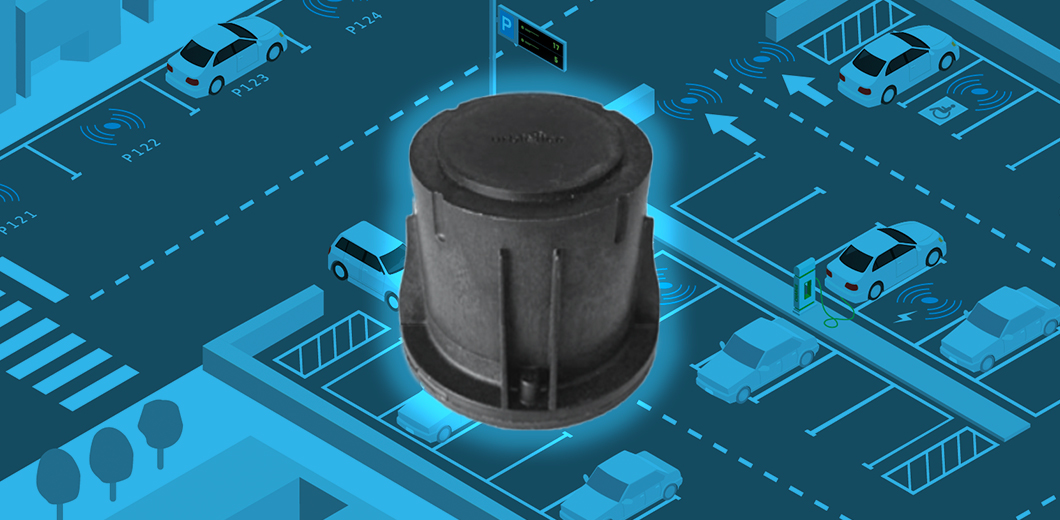The latest technology is being used to improve life in cities, and this includes managing parking more efficiently. Detection sensors play a key role in this. But what are they and how is their reliability assessed in parking lots?
The latest technology plays a crucial role in improving the quality of life in our cities, and one of the most prominent aspects of this transformation is the optimization of parking spot management. Detection sensors have become key players in this. But what exactly are they and how can we measure their reliability in parking?
Detection sensors are essentially devices specifically designed to recognize vehicles occupying and vacating parking spots. Their main task is to provide accurate information on whether a spot is taken. One outstanding example is the U-Spot sensor, which enables single-spot occupancy to be detected by flush-mounted, autonomous sensors. These devices stand out for their reliability and ability to effectively manage parking spots in a variety of ways ranging from monitoring the misuse of reserved spots to providing drivers with real-time information on the availability of free spots via information panels.
Furthermore, these sensors can not only detect the occupancy of a parking spot but also record the rotation/changes in status with the arrival and departure of vehicles. This is crucial for both monitoring usage and collecting statistics, which contributes significantly to the efficient management of parking spots in cities.

U-Spot: Single-spot IoT detection
Factors measuring the reliability of vehicle detection sensors
Vehicle detection devices in parking spots are based on advanced technology to ensure maximum reliability and provide additional features, such as alerts to traffic officers when spots are being used inappropriately. Accuracy and error reduction are fundamental to these solutions.
Reliability measurement varies depending on whether the system is for monitoring or guidance. For guiding, measuring occupancy is enough, which implies taking a snapshot of the status of the spots at a given time to provide information on the overall availability of parking spots.
However, for monitoring, we also need to know what is happening in each spot at all times. Precise information on when a vehicle arrives and leaves is required, with margins of a few seconds. Each parking session is tracked in detail, accurately monitoring the start and end of each session to avoid false starts and unfair fines.
At Urbiotica, we are experts and leaders in developing IoT and Artificial Intelligence technologies to have a positive impact on urban mobility, which is why we work to ensure that our sensors guarantee high reliability and optimal performance in managing parking spots.
Maintenance
It is also important to ensure optimal functioning of the independent magnetic sensors at all times in order to guarantee their reliability in the medium and long term. Whether or not to maintain the sensors depends primarily on whether the intelligence of the system resides in the device itself or whether all the intelligence is located and managed from the IoT smart platform.
When the intelligence of the sensors resides in the device, sensor-by-sensor maintenance must be performed on a regular basis.
In the case of U-Spot sensors managed remotely from the platform, once installed, there is no need to physically go to the site to manage and monitor them. They are maintenance-free sensors.
Calibration
Correct calibration of the sensors is a prerequisite for optimal operation. The positive side is that this is based on automatic algorithms and therefore, again thanks to the remote management of Urbiotica sensors, this is not a point of concern since it is done remotely. The following aspects are checked in this automatic remote calibration:
- Proper functioning of the communication network connections system, ensuring faultless transmission of information in real time.
- Performance of detection tests to check/review the accuracy and reliability of the sensors in detecting parking spot occupancy.
- Adjustments of the sensitivity and checks of the stability of the sensors, ensuring that they are stable and that their performance is not affected by changes in temperature, humidity, or asphalt wear over time.
These aspects must be considered to increase the cost-effectiveness of the systems, both for parking spot control and vehicle guidance.
Furthermore, in order to guarantee the quality and reliability of the services provided, Service Level Agreements (SLAs) must be specified as a requirement in the bidding documents. These clearly defined, measurable agreements establish the successful bidder’s performance expectations and commitments, thereby ensuring compliance with the standards set out in the bidding documents.
Sensor types and their technology
The type of sensor and its technology are also key factors in ensuring reliable vehicle detection in parking spots. Just like with other products and technological solutions, the quality of the sensors and the complexity of the technologies used to manufacture them largely determine their reliability.
It is important to note that the most reliable sensors are those that are developed with advanced technologies such as artificial intelligence (AI), deep learning and Cloud data management. These technologies allow sensors to learn and generate increasingly accurate information, with greater discrimination capabilities.
When measuring the reliability of sensors, different factors are taken into account:
- First, occupancy through patrols in which all the spots are checked and the current status is recorded and compared with the information provided by the detection system. Rounds of all spots should be made at different days/times to gain a sufficiently large sample with significant reliability. This monitoring of all spots may take more time and effort.
- Secondly, rotation, where a group of spots is assessed continuously to see their changes in status over a given period of time. Just like above, this should be done on different days and at different times.
In addition, it is important to perform installation tests and periodic assessments over time to verify the stability and reliability of the system. We recommend performing these tests at least once a year to ensure that the system maintains its reliability over time.